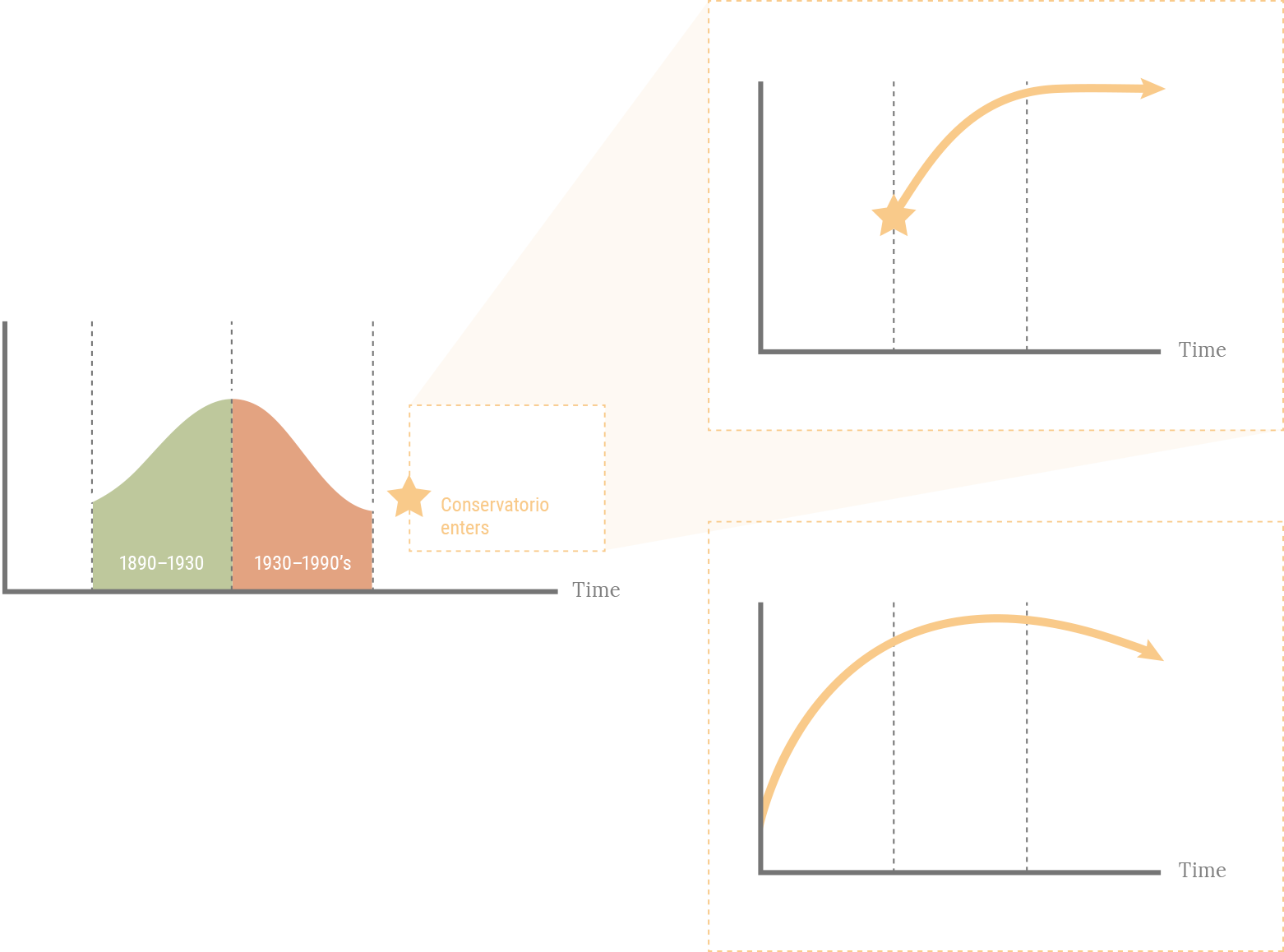
Casco Viejo, like many other historic districts, has experienced the troughs and peaks of market and socioeconomic cycles (Figure 1a). In order to reduce future exposure to extreme market highs and lows, Conservatorio utilizes a nontraditional inclusionary long-term development model. In contrast, a traditional development approach for areas with undervalued real estate tends to produce the following market cycle (Figure 1b).
Speculation: The neighborhood’s potential is apparent during the period of early investment but the future is uncertain. Investors at this stage typically buy and hold properties rather than immediately restore them as the risk/reward profile of buying and holding is superior to that achieved through early development.
Development: By stage two, a small amount of investment success may be observed and is a signal to landowners to factor this potential into the pricing of un-restored buildings. This increase in pricing renders speculation less attractive, thus developers must add value to buildings in order to generate adequate returns. Stage two continues until the area is completely built-out.
Maturity: In the final stage, buildings tend to be held for cashflow purposes and developers seek to reposition existing properties in order to achieve consistent returns. Developers may also simply exit the market all together. Mature property markets are susceptible to decline in the long run as residential and commercial property preferences change and age-related building depreciation requires increasingly higher levels of maintenance investment. The decision to reinvest or sell is highly dependent on internal factors to the building (maintenance costs) and external factors beyond the control of the property owner (neighborhood externalities). These neighborhood externalities, impact the overall demand for property in the area. Such externalities could be maintenance levels of adjacent buildings, neighborhood crime, unemployment, etc.
Conservatorio’s approach seeks to avoid the decline often experienced in mature property markets through engagement and investment in the community early on within their investment timeline. Specifically, subsidized commercial space is offered to community organizations and businesses since the initial stages of development in order to add social and cultural value to the neighborhood. Programs and partnerships have been developed with the goal of educating residents and creating employment opportunities. In addition, Conservatorio has also developed affordable housing properties to ensure housing remains accessible to residents. It is Conservatorio’s hope that these actions will help ameliorate negative neighborhood externalities as residents and business owners become invested in the long term future of their community.
Conservatorio entered the Casco Viejo market between stages 1 and 2 (Figure 1b), simultaneously to when they started investing in the community. As the market matures, Conservatorio will taper down their community involvement as they believe their initial actions will have helped to create a self-sustaining network of residents and businesses (Figure 1c).